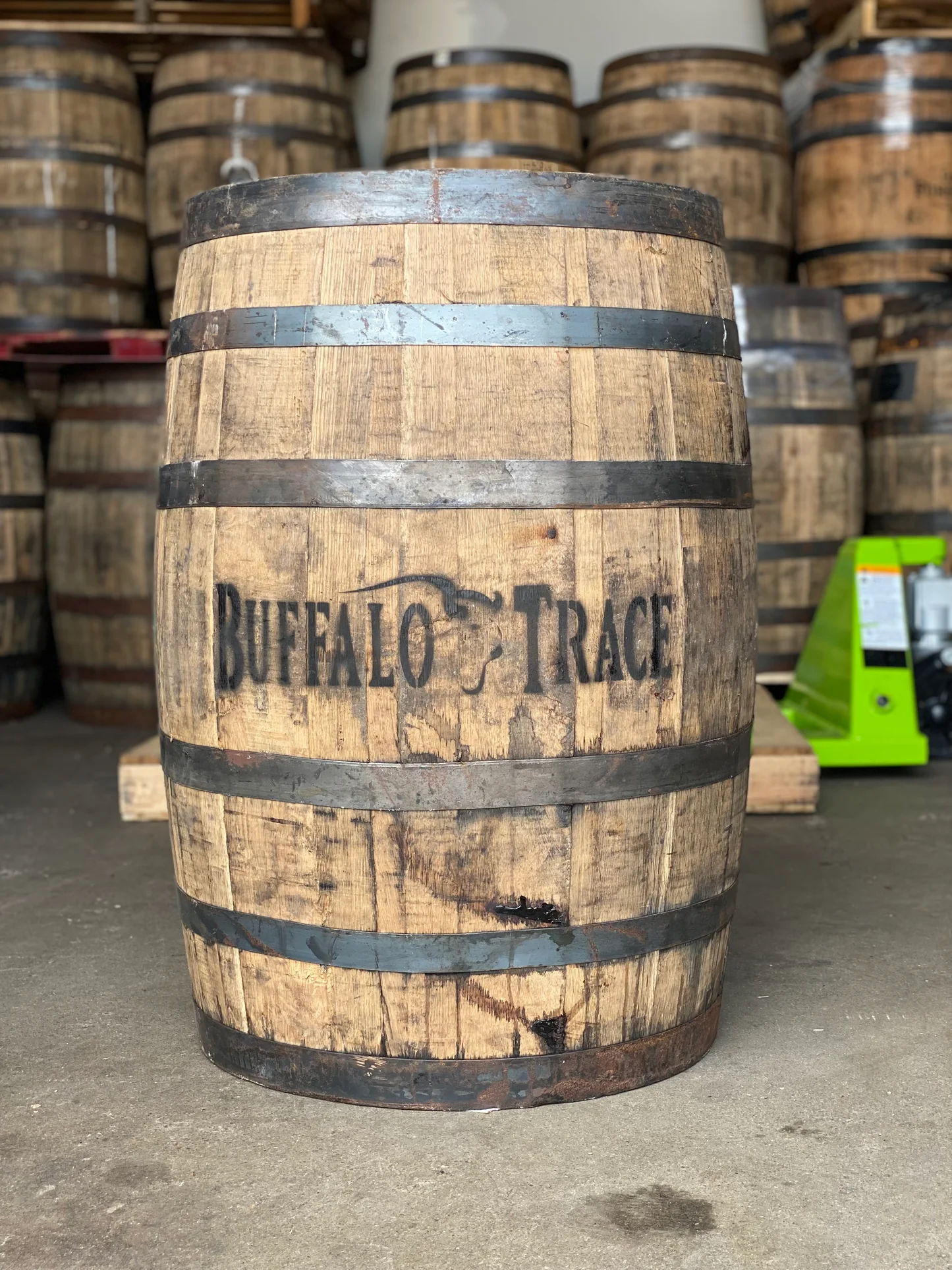White Oak and Whiskey’s Future

The rich caramel hues, the notes of vanilla, spice, and toasted sugar, the very essence of American whiskey, all owe their character to one humble tree: the white oak, ‘Quercus alba.’ For centuries, distillers have relied on the unique properties of wood to shape their spirits during maturation. But a quiet, persistent question has begun to ripple through the industry: are we running out of white oak for whiskey production? It’s a concern that touches on sustainability, economics, and the very tradition of spirit making, leading many to wonder about the future landscape of their favorite drams. The implications for distillers, coopers, and whiskey drinkers alike are significant, prompting a deeper look into the health of our forests and the practices that sustain them.
The Indispensable Role of White Oak
To understand the concern, you must first appreciate why white oak is so utterly crucial to whiskey. Unlike other woods, white oak possesses a remarkable combination of chemical and physical attributes that make it peerless for barrel aging. Its tight grain structure, a natural marvel, prevents liquid from seeping out while still allowing the crucial exchange of air that mellows and transforms the raw spirit. This porosity is selective; it allows oxygen to interact with the whiskey, softening harsh notes and fostering complex chemical reactions, yet it holds the liquid firmly within its embrace.
Chemically, white oak is a treasure trove of compounds that directly contribute to whiskey’s flavor. It is rich in vanillin, the same compound found in vanilla beans, which imparts those beloved sweet, creamy notes. Lactones, particularly cis- and trans-methyl octalactone (often smelling of coconut or dried fruit), are also abundant. Furthermore, the wood contains tannins, polyphenols that lend structure, a subtle astringency, and act as natural antioxidants, protecting the whiskey during its long slumber. Before whiskey even touches the wood, the staves undergo a meticulous seasoning process, often air drying for years. This weathering leaches out undesirable green wood characteristics and begins to break down hemicellulose into wood sugars, which caramelize during the subsequent toasting and charring of the barrel.
The charring itself, an open flame applied to the inside of the barrel, is another pivotal step. This process creates a layer of activated carbon that filters out harsh congeners from the new make spirit. It also forms a “red layer” just beneath the char, a caramelized zone of wood sugars that provide further sweetness and depth. The depth of the char, often measured in specific “alligator char” levels, directly impacts the flavor profile the distiller aims for. Each of these steps, from the tree’s growth to the cooper’s craftsmanship, is meticulously designed around the inherent qualities of white oak, creating a symphony of flavors that define whiskey as we know it. Without white oak, the sensory experience of a fine bourbon or rye would be fundamentally different, if not impossible to achieve under current regulations.
Harvesting Challenges and Forest Management
The journey from forest to barrel is a long and arduous one, fraught with challenges that directly impact the availability of suitable white oak. A white oak tree must grow for 60 to 100 years, sometimes even longer, before it reaches maturity sufficient for barrel production. Only straight, defect free logs of a certain diameter are deemed suitable for cooperage. These “stave logs” are a small fraction of the total timber harvested, making them a premium commodity. The process of finding these specific trees requires skilled foresters and loggers who understand the precise needs of the cooperage industry.
Most white oak forests are privately owned, often by small landowners. This fragmentation can complicate large scale, coordinated forest management efforts. While there are robust sustainable forestry initiatives in place, ensuring consistent quality and quantity of stave-grade timber across thousands of individual plots is a complex undertaking. Factors such as land use changes, invasive species, and increased frequency of extreme weather events also pose threats to forest health and regeneration.
The demand for white oak extends far beyond the whiskey industry. It is also highly prized for flooring, cabinetry, furniture, and shipbuilding, creating significant competition for this valuable resource. This diverse demand, coupled with the long growth cycle and specific quality requirements, contributes to the growing pressure on white oak supplies. Sustainable forestry practices, including selective harvesting, replanting, and protecting young growth, are essential to ensure a continuous supply. Organizations like the American Forests and various state forestry departments work tirelessly to promote these practices, but the scale of demand and the natural pace of forest growth present a perpetual challenge. Understanding these complex harvesting dynamics is crucial when considering if are we running out of white oak for whiskey production?
The Cooperage Conundrum and Industry Innovation
Coopers, the artisans who transform raw staves into functional barrels, sit at the heart of the supply chain between forest and distillery. Their craft is ancient and demanding, requiring immense skill and precision. The rising cost and dwindling availability of high-quality white oak directly impact their operations. This pressure forces coopers to innovate, sometimes exploring new techniques or even alternative wood sources, though traditional methods largely prevail due to regulatory and sensory requirements.
One area of innovation involves seasoning practices. Traditionally, staves are air-dried for years, but some coopers are experimenting with kiln-drying or accelerated seasoning methods to speed up the process and reduce their raw material inventory. However, these methods must be carefully controlled to ensure they do not negatively impact the flavor contribution of the wood. There is also a continuous effort to maximize yield from each log, ensuring as little waste as possible.
Distillers themselves are exploring various strategies to cope with potential shortages. Some are investing directly in cooperages or sustainable forestry initiatives to secure their supply. Others are looking at different barrel sizes or experimenting with varying char levels and toast profiles to achieve specific flavors with potentially less wood or different stave thickness. While the vast majority of American whiskey must, by law, be aged in new, charred oak containers, there’s room for creativity within those parameters. Furthermore, some craft distillers, particularly those making “whiskey” rather than “bourbon” or “rye,” have a bit more latitude to experiment with different wood types or finishing techniques, though this represents a niche segment of the market. The industry faces a delicate balancing act: honoring tradition while adapting to the realities of resource availability. The question of “are we running out of white oak for whiskey production?” directly fuels this drive for innovation and adaptation.
The Future of Whiskey
The question of “are we running out of white oak for whiskey production?” doesn’t have a simple yes or no answer. While we are not facing an immediate catastrophe, the challenges are real and demand proactive solutions. The increasing global demand for whiskey, particularly American whiskey, puts immense pressure on a resource that takes decades to regenerate. This situation calls for a multi-faceted approach, focusing heavily on sustainability throughout the entire supply chain.
Sustainable forestry is paramount. This includes responsible harvesting practices that prioritize forest health, replanting efforts that ensure future generations of trees, and protecting existing old-growth forests. Certifications from organizations like the Forest Stewardship Council (FSC) provide a framework for responsible forest management. Education for private landowners about the long-term value of their timber, beyond a quick sale, is also critical.
Research into white oak genetics and accelerated growth methods could offer long term benefits, though these are decades away from impacting barrel supply. In the interim, innovation within cooperages and distilleries will continue. This might involve more precise wood selection, optimizing barrel fill levels, or even exploring alternative wood treatments that enhance flavor extraction from less traditional stave profiles. Some distillers are also looking into extending the life of barrels through re-charring or utilizing them for other spirits after their initial whiskey use, though this doesn’t directly address the new oak requirement for bourbon and rye.
Ultimately, the future of whiskey and its reliance on white oak is intertwined with our commitment to environmental stewardship. A healthy, thriving forest ecosystem ensures not only the continuity of a beloved spirit but also the health of our planet. The whiskey industry, with its deep roots in tradition, is increasingly recognizing its responsibility to protect the natural resources that are so vital to its existence. By supporting sustainable practices and demanding transparency, consumers can also play a role in safeguarding the future of white oak and, by extension, the future of whiskey. The answer to “Are we running out of white oak for whiskey production?” depends heavily on the collective actions taken today.

Leave a Reply
Become an insider and receive weekly advice, tips, and insight on all things whiskey
.
Weekly tips, reviews and recommendations to help you enjoy whiskey life to the fullest.
JOIN THE LIST
Sippin' With Jordan Davis
sippin' with the stars
Million Dollar Cowboy Bar WY
old fashioned aF
5 Steps To Sip and Savor Whiskey
whiskey 101
COMMENTS